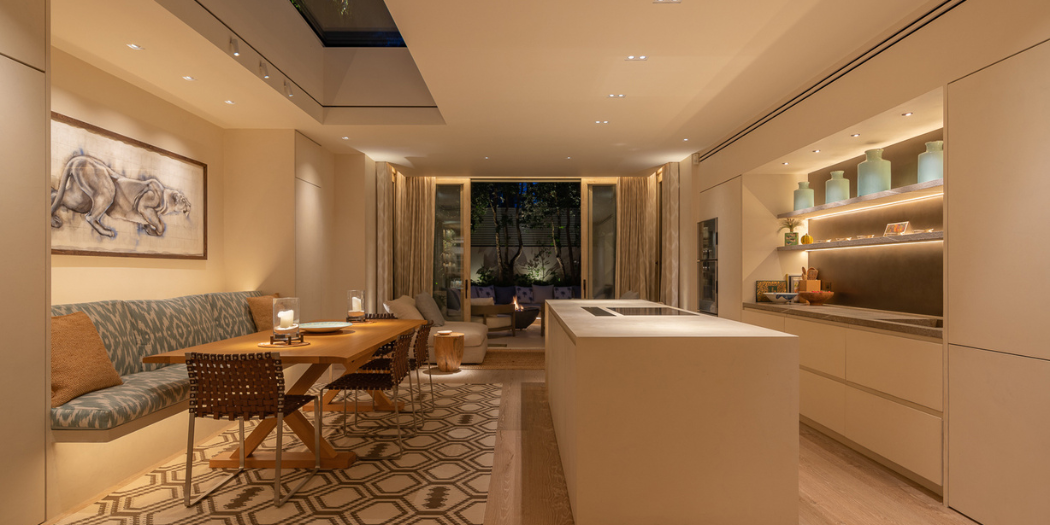The Ultimate Guide to Architectural Lighting Design: A Blueprint for Your Project

The facade of a building is its identity—the first impression, a canvas that communicates its purpose, character, and vision. While architecture provides the form, it is light that unlocks its true potential after sundown. A well-executed facade lighting design is a powerful symphony of art and science, transforming a building from a static structure into a dynamic, breathtaking landmark. This isn’t about simply illuminating a building; it’s about a purposeful and strategic exterior lighting design that brings a structure to life.
Understanding the Lighting Design Process: Our 5-Step Blueprint
A professional lighting design process is a structured journey from a conceptual vision to a luminous reality. It ensures that every decision is intentional and aligned with the project's goals.
Step 1: Conceptualization and Vision
This foundational phase begins with understanding the project's purpose and the client’s vision. We work closely with architects and interior designers to define the desired ambiance, mood, and functional requirements of each space. This is where we determine the story the lighting will tell—whether it's to create a warm, inviting home or a dynamic, cutting-edge commercial space.
Step 2: Technical Design & Calculations
With the concept established, the blueprint moves to technical execution. This step involves meticulous light level calculations, which ensure that every area receives the precise amount of illumination required for its function and to meet local energy codes. We create detailed technical drawings and layouts that specify luminaire placement, wiring diagrams, and control system schematics, providing a clear roadmap for the entire project.
Step 3: Luminaire Selection & Specification
This is where the design's vision takes a tangible form. Based on the technical requirements and aesthetic goals, we specify the exact luminaires. Our knowledge of global manufacturers and access to unique, high-performance fixtures allows us to select the best technology for the project, including custom lighting solutions where a standard fixture simply won't suffice.
Step 4: Installation & Guidance
Our role extends into the construction phase. We provide comprehensive lighting installation guidance to ensure that the design is executed precisely as intended. We work in tandem with electricians and contractors, offering clarity on placement, aiming, and wiring to avoid common on-site mistakes that can compromise the final effect.
Step 5: Commissioning & Final Review
The final step is where the true artistry is revealed. Once installation is complete, we perform a final walk-through to commission the lighting system. This involves programming the controls, adjusting beam angles, and fine-tuning light levels to match the original design intent. It is a critical stage that ensures the project delivers on its promise of a flawless luminous environment.
Master the Core Lighting Design Principles
A deep understanding of fundamental lighting design principles is what separates effective illumination from truly great design.
Layered Lighting (Ambient, Task, Accent, Decorative)
No single fixture can fulfill all lighting needs. A layered approach is essential:
- Ambient:The primary, general illumination of a space.
- Task: Focused light for specific activities, like reading or working.
- Accent: Used to highlight architectural features or artwork.
- Decorative: Fixtures that are beautiful in themselves, acting as an artistic element.
The Role of Light and Shadow
Great designers know that light is defined by the shadows it creates. The deliberate use of shadow can add drama, texture, and a sense of volume to a space. It allows the architecture itself to become a part of the lighting design.
Color Temperature & CRI
The quality of light is paramount. We meticulously select fixtures based on their:
- Correlated Color Temperature (CCT): Measured in Kelvin (K), CCT determines whether the light appears warm (2700K) or cool (4000K). This directly influences the mood of a space.
- Color Rendering Index (CRI): CRI measures how accurately a light source reveals the true colors of objects. A high CRI (90+) is essential for bringing out the richness of materials and finishes.
Why a Professional Blueprint is Essential for New Construction
For a new project, implementing lighting solutions for new construction from day one is not just an aesthetic choice; it’s a wise financial one. Integrating lighting design early in the process avoids costly and time-consuming retrofits, ensures the design seamlessly integrates with the architecture, and guarantees compliance with all building and energy codes.
Finding the Right Partner: How to Hire a Lighting Designer
When selecting a partner for your project, asking the right questions is key. A true expert will be more than just a supplier; they will be a collaborator.
What to Ask During a Consultation
Ask about their process, their experience with similar projects, and their approach to solving design challenges. Request a portfolio of their completed work and ask about their specific technical expertise.
Why a Local Partner Matters (The Light Sketch, a leading lighting design company India)
Working with a local lighting design company India provides invaluable benefits. A local team understands the specific climate, energy codes, and local supply chain. Our presence in Hyderabad allows us to provide on-site support and guidance throughout every phase of your project.
Ready to see your project in a new light? The Light Sketch is a premier architectural lighting design firm committed to turning your vision into a stunning reality. Contact us today to begin crafting your blueprint for success.
